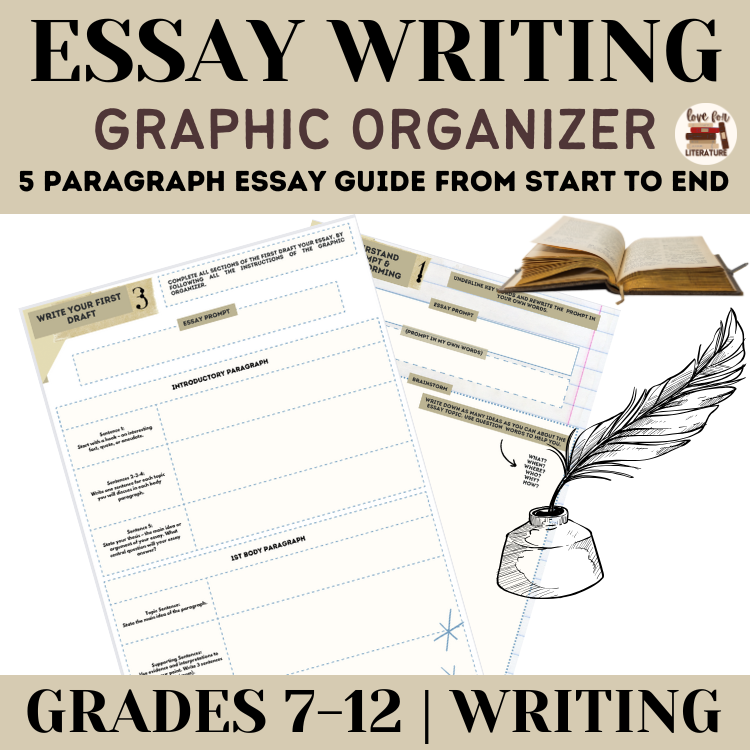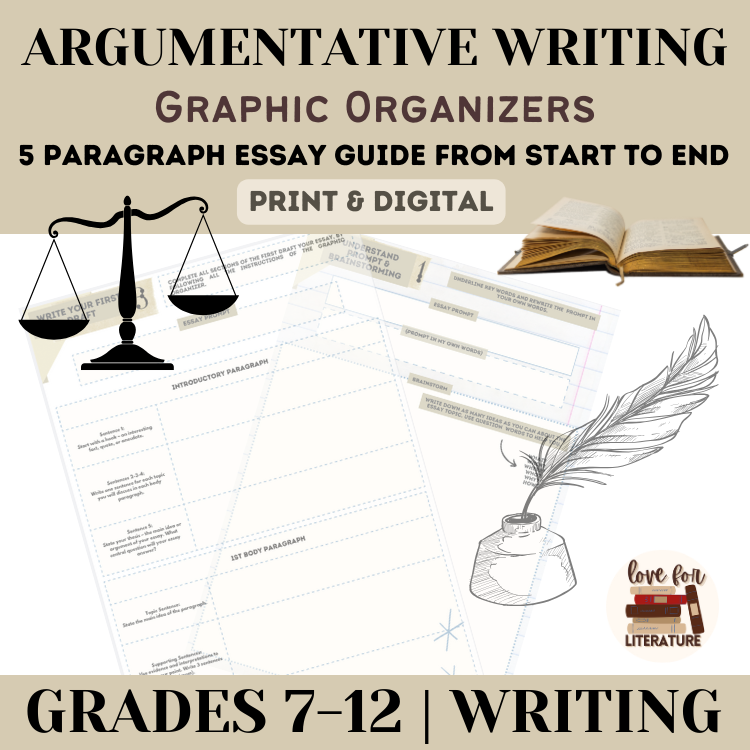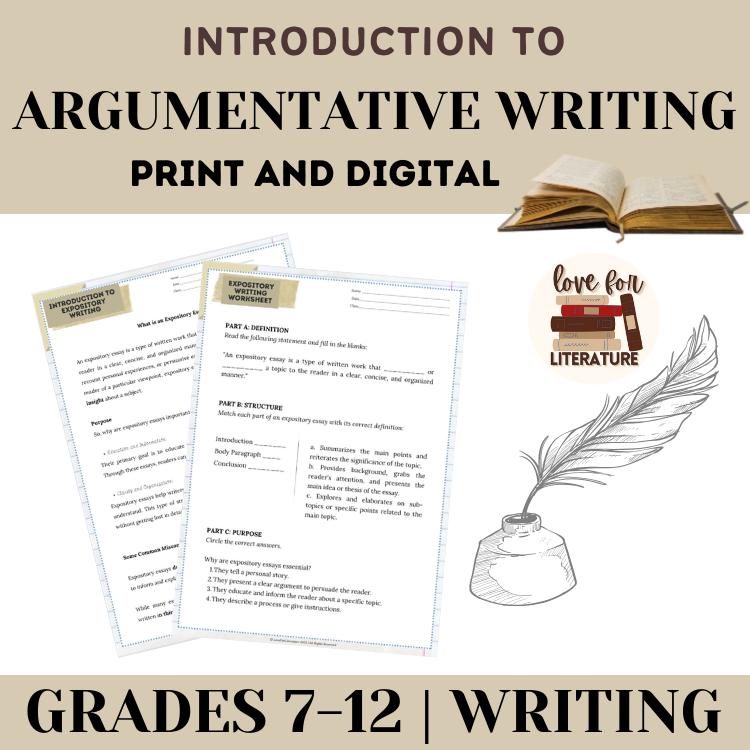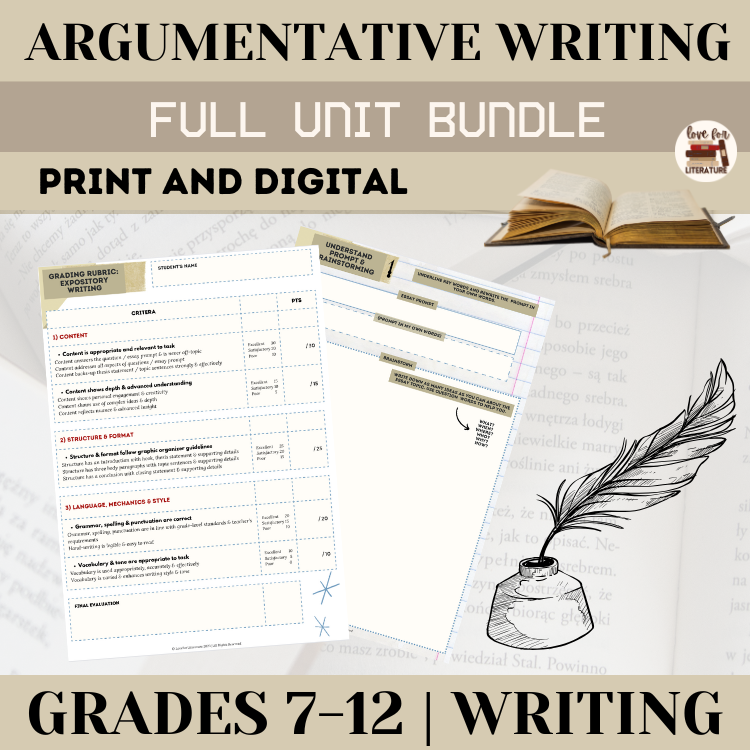Key Takeaways: What Are the Stages of the Writing Process?
✅ Brainstorming – Writing begins with discovery. Encourage students to generate ideas freely before organizing their thoughts.
Thank you for reading this post, don't forget to subscribe!✅ Planning – Structure is key! Outlining helps students clarify their main points and organize their arguments effectively.
✅ Drafting – The first draft is about getting ideas down on paper. Remind students that writing is a process, and perfection isn’t the goal—yet!
✅ Revising & Editing – Great writing comes from revision. Encourage students to refine their work by improving clarity, structure, and grammar.
By guiding students through these stages, you help them develop confidence and skills that make writing less overwhelming and more rewarding. Using graphic organizers at each stage provides structure, making the writing process more visual, organized, and accessible for all learners.

Teaching Middle School and High School students to write essays can feel like navigating a maze. Many students see writing as a single, daunting task instead of a structured process. Breaking it into stages—and using graphic organizers for each—can transform essay writing into an approachable, creative endeavor. So, what are the stages of the writing process?
Encouraging students to approach each stage with purpose is key: brainstorm to discover, plan to clarify, draft to refine, finalize to polish.
Let’s go through the writing process by taking stock of what some well-known authors have said about the writing process and its struggles, while also looking at the most common pitfalls students have when writing an essay or approaching essay writing in general.
What Are the Stages of the Writing Process? Step 1: Brainstorm to Discover

The brainstorming stage is where students uncover their ideas. Much like Flannery O’Connor’s view of writing as a form of discovery, students must see this as an exploratory process. Graphic organizers like mind maps or idea webs are invaluable here.
Students often skip brainstorming, seeing it as unnecessary. But without this step, their ideas may feel disconnected and superficial. We need to encourage them to think of brainstorming as throwing paint on a wall—some ideas will stick, and others won’t. The point is to discover what’s worth exploring.
Common Mistakes
- Fear of bad ideas: Students may hesitate to jot down “bad” ideas, not realizing even the worst ideas can spark something great.
- Overthinking: They might try to organize too soon, skipping the free-flowing creativity that brainstorming demands.
Remind them: this stage is actually about quantity, not quality.
Step 2: Plan to Clarify - Planning in the Writing Process

Once the brainstorming ideas are on paper, students move to the planning phase. William Zinsser’s advice, “Writing is thinking on paper,” pairs perfectly with King’s point: this is the stage where imagination needs to meet logic and clarity.
Why It’s Important
Planning creates a roadmap for the essay. Without it, students risk producing unfocused or illogical arguments. Students must select and arrange ideas into a coherent structure. Graphic organizers such as essay outlines, flowcharts, or cause-and-effect charts can help with this.
Common Mistakes
- Skipping organization: Many students leap straight to drafting without creating a plan, resulting in chaotic writing.
- Overloading: They often try to include every idea from brainstorming, even if it doesn’t fit.
Solution
Model the process with a simple essay outline. Challenge students to justify their choices by asking questions like:
- Why did you choose this point to start with?
- How does this lead to the next idea?
- Could this section be clearer if placed elsewhere?
Here we need to remind students to be selective, ensuring their plan conveys their argument as logically and effectively as possible. They’re planning a roadmap and taking the reader on a journey: they need to feel like they are in control and their arguments follow a logical structure.
Step 3: Draft to Refine – A Key Stage of the Writing Process

The first draft isn’t the final product—it’s the foundation. As Hemingway reminds us, writing is rewriting.
Why It’s Important
Students often want their first draft to be perfect, but this mindset can paralyze progress. They need to view this step as part of a larger process where mistakes are expected and revising is key. Even if they’re stuck, they need to start writing.
Common Mistakes
- One-and-done thinking: Many students write a single draft and submit it without rereading. So common with my students…
- Avoiding self-editing: Fear of mistakes leads to reluctance in rereading their work.
Solution
Introduce tools like peer review checklists or self-editing guides. Sharing your teaching rubric in advance can also be a great idea. But most importantly, emphasize the importance of rereading drafts.
Step 4: Finalize to Polish - Revising and Editing in the Writing Process

The final draft is the culmination of a student’s work, where they polish and refine their ideas. Students may experience bursts of inspiration during this phase, but they need to balance creativity with discipline and the carefully created plan they’ve crafted in the planning stage. Deviating wildly from their plan can be tempting at this stage if they have that last-minute stroke of genius, but it can derail the essay completely!
Common Mistakes
- Over-editing: Students may try to rewrite entire sections, losing focus and run out of time.
- Last-minute inspiration overload: They may attempt to integrate a new idea without ensuring it fits logically.
Solution
I would encourage students to compare their final draft with their original plan and learn to assess themselves whether the last-minute inspiration can be carved into the existing plan. They might not be able to express the new idea completely, but they can fit it in someway, as long as they don’t jeopardize their time management and their overall structure.
This comes with experience and some creative students find it difficult to channel their ideas into a standard structure, but in some cases, less is more. Disorganized creativity just won’t translate to the reader as well as organized slightly-less-creative work: the translation analogy can help them to “get it”. Like with all things, when they master the structure, they can write anything; creativity then becomes their extra asset.
How to Teach These Steps?
Having a roadmap to fall back on with a 5 paragraph structure is the best way to teach your students essay writing, whether it’s argumentative, expository or informational.
If you’re interested in a step-by-step guide that perfectly outlines the four stages of the writing process, check out my graphic organizers and other resources by clicking the icons!
The best part: all the prep work is done, just print or post and enjoy the time with your students as you guide them along their essay writing.










 Next Post
Next Post
[…] How to Teach Essay Writing with Graphic Organizers – A comprehensive guide to using graphic organizers for every stage of the writing process. […]
[…] How to Teach Essay Writing: Guiding Students Through the Writing Process with Graphic Organizers […]